In This Week’s Star
- Kennedy Space Center Director Robert Cabana Visits Marshall
- NASA Tech Tank with Mark Cuban Set for July 19
- Harsh Temperatures Require Extreme Protection for Deep Space Rocket
- ‘X’-ploring the Eagle Nebula and ‘Pillars of Creation’
- Space Station Astronauts Release Northrop Grumman Resupply Vehicle
- This Week in NASA History: ISERV Launches to ISS – July 20, 2012
- Discovery by Fermi Gamma-ray Space Telescope Highlighted on ‘This Week @NASA’
- Obituaries
Kennedy Space Center Director Robert Cabana Visits Marshall
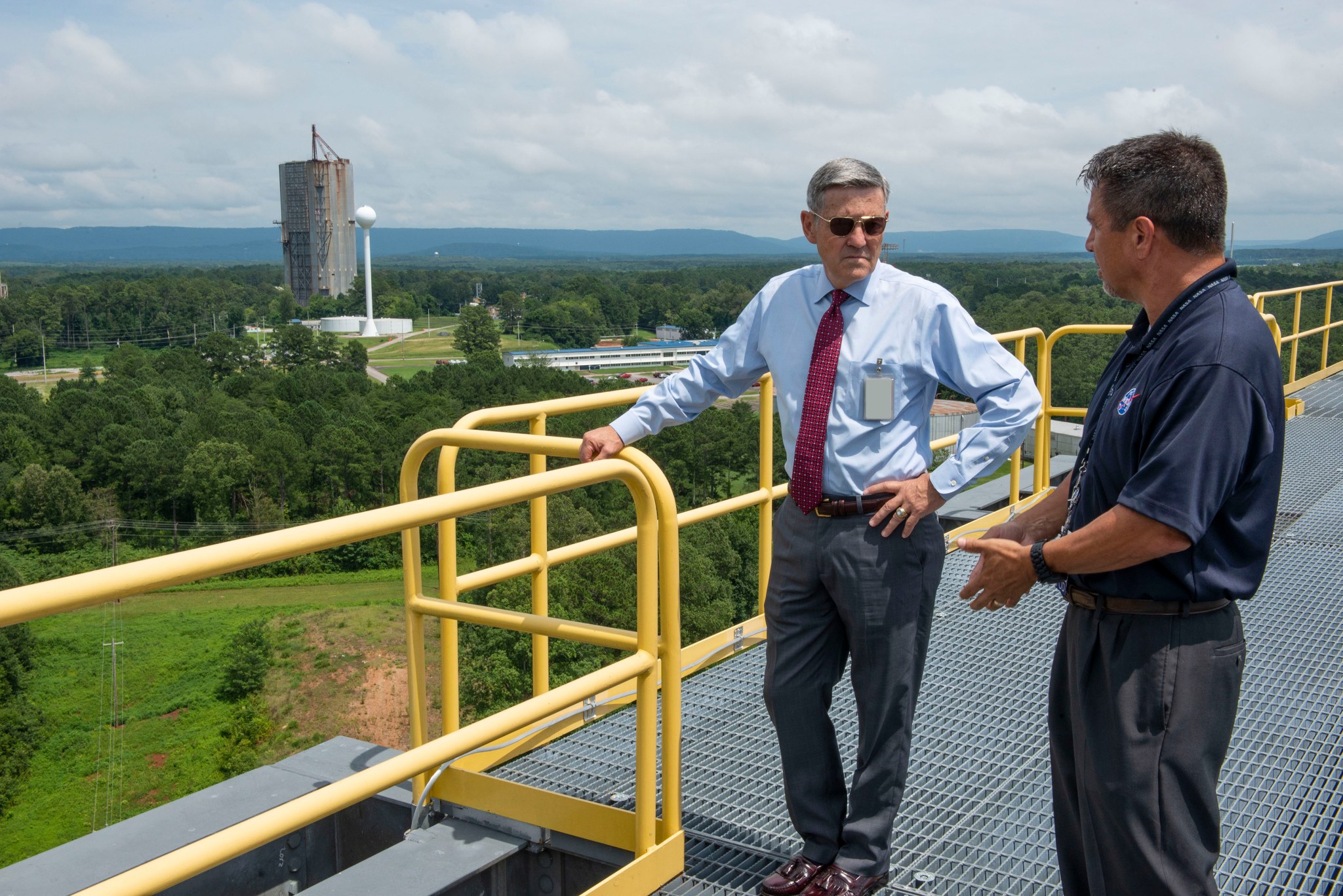
NASA’s Kennedy Space Center Director Robert Cabana visited Marshall Space Flight Center July 16. With the Dynamic Test Stand in the background, Cabana, left, talks with Tim Flores, integration manager for stages in the Space Launch System Program Office, on top of Test Stand 4693, NASA’s largest SLS structural test stand. In addition to viewing SLS hardware, Cabana spoke to the Marshall Association and National Space Club Huntsville during his visit. (NASA/Fred Deaton)
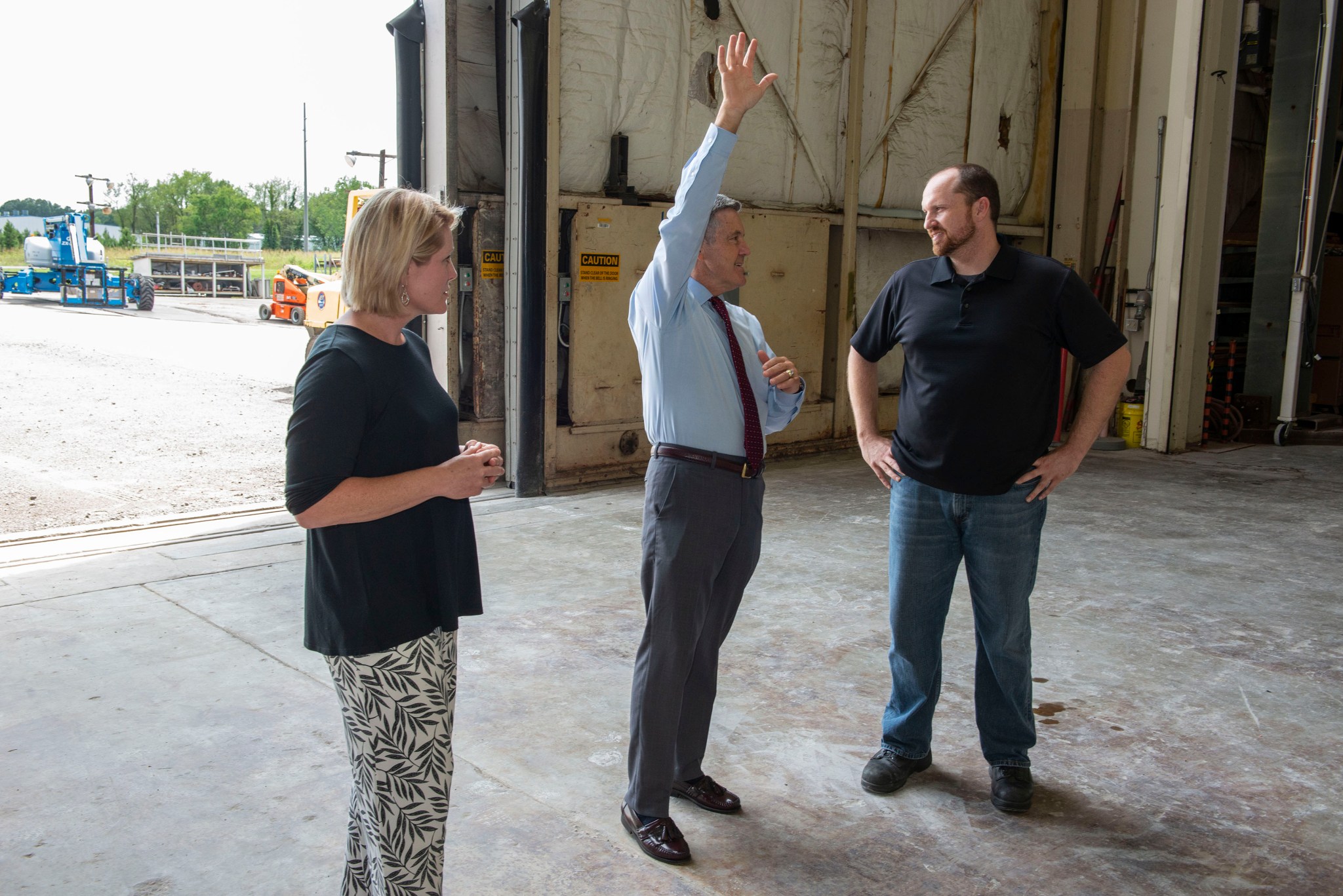
Kennedy Space Center Director Robert Cabana, center, receives an update on SLS hardware from Heather Haney, left, an engineer in the Space Launch System stages office, and Mark White, lead test engineer for the SLS core stage engine section, on July 16 in Marshall’s Building 4619. Cabana, Haney and White are standing in front of a structural test version of the Intertank. The structural test article is undergoing critical testing as engineers push, pull and bend the hardware with millions of pounds of force to ensure it can withstand the forces of launch and ascent. (NASA/Fred Deaton)
NASA Tech Tank with Mark Cuban Set for July 19
NASA Marshall Space Flight Center team members are encouraged to attend the NASA Tech Tank, Marshall’s own version of the television show Shark Tank, July 19 from 1-4 p.m. in Building 4316. Shark Tank is a reality television series allowing entrepreneurs a chance to present business ideas to a panel of judges, who decide whether to invest. One of the show‘s investors, Mark Cuban, will serve as a special guest at the Marshall event. Judges will include Marshall Chief Technologist John Dankanich and other representatives from Marshall programs and projects. (NASA)
Harsh Temperatures Require Extreme Protection for Deep Space Rocket
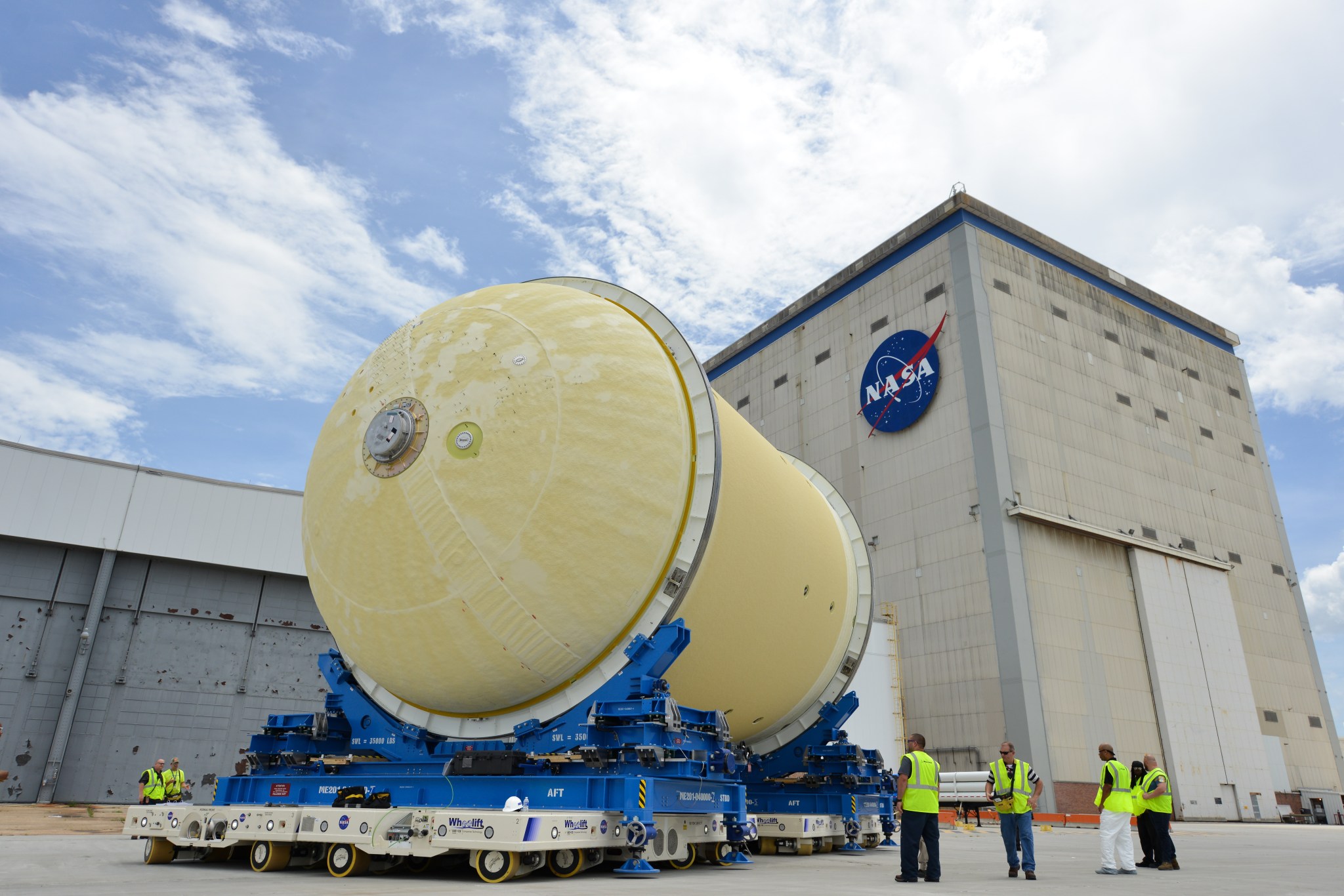
An innovative robotic system sprayed thermal protection foam on the tank, shown here, that will hold the cryogenic liquid oxygen propellant for Exploration Mission-1, the first integrated flight of NASA’s Space Launch System and the Orion spacecraft. With the thermal protection system application complete at NASA’s Michoud Assembly Facility, engineers recently moved the tank to install sensors and prepare it to be vertically stacked with the intertank and forward skirt. Once stacked, these three pieces will form half of the 212-foot-tall rocket core stage, which has four RS-25 engines that produce 2 million pounds of thrust. (NASA/Jude Guidry)
‘X’-ploring the Eagle Nebula and ‘Pillars of Creation’
The Eagle Nebula, also known as Messier 16, contains the young star cluster NGC 6611. It is also the site of the spectacular star-forming region known as the Pillars of Creation, which is located in the southern portion of the Eagle Nebula.
This new composite image shows the region around the Pillars, which are about 5,700 light years from Earth. The image combines X-ray data from NASA’s Chandra X-ray Observatory and Hubble Space Telescope optical data. The optical image, taken with filters to emphasize the interstellar gas and dust, shows dusty brown nebula immersed in a blue-green haze, and a few stars that appear as pink dots in the image. The Chandra data reveal X-rays from hot outer atmospheres from stars. In this image, low-, medium- and high-energy X-rays detected by Chandra have been colored red, green and blue.
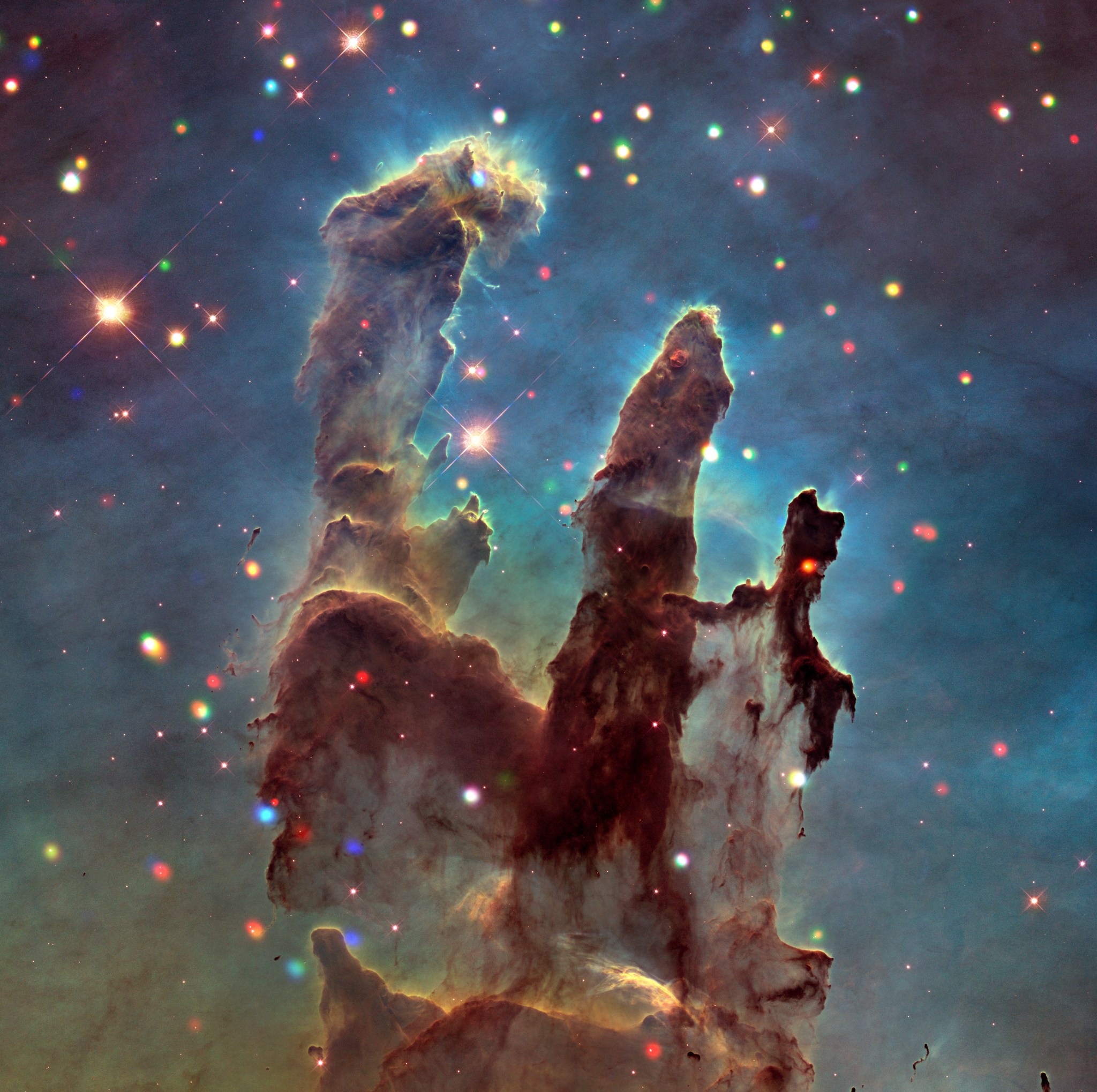
Using Chandra, researchers detected over 1,700 individual sources of X-rays in the Eagle Nebula — only a fraction are seen in this small field of view. Optical and infrared identifications with stars were used to sort out chance interlopers in the foreground or background, and to determine that more than two-thirds of the sources are likely young stars that are members of the NGC 6611 cluster.
Chandra’s unique ability to resolve and locate X-ray sources made it possible to identify hundreds of very young stars, and those still in the process of forming, which are known as “protostars.” Infrared observations from NASA’s Spitzer Space Telescope and the European Southern Observatory indicate that 219 of the X-ray sources in the Eagle Nebula are young stars surrounded by disks of dust and gas and 964 are young stars without these disks.
Combined with the Chandra observations, the data show that X-ray activity in young stars with disks is, on average, a few times less intense than in young stars without disks. This behavior is likely due to the interaction of the disk with the magnetic field of the host star. Much of the matter in the disks around these protostars will eventually be blown away by radiation from their host stars, but, in certain cases, some of it may form into planets.
In the image, some of the X-ray sources appear to be located in the Pillars.
However, an analysis of the absorption of X-rays from these sources indicates that almost all of these sources belong to the larger Eagle Nebula rather than being immersed in the Pillars.
Three X-ray sources appear to lie near the tip of the largest Pillar. Infrared observations show a protostar containing four or five times the mass of the Sun is located near one of these sources — the blue one near the tip of the Pillar. This source exhibits strong absorption of low-energy X-rays, consistent with a location inside the Pillar. Similar arguments show that one of these sources is associated with a disk-less star outside the Pillar, and one is a foreground object.
A paper by Mario Guarcello, currently at the National Institute for Astronomy in Italy, and colleagues describing these results appeared in The Astrophysical Journal, available online.
NASA’s Marshall Space Flight Center manages the Chandra program for NASA’s Science Mission Directorate. The Smithsonian Astrophysical Observatory in Cambridge, Massachusetts, controls Chandra’s science and flight operations.
Space Station Astronauts Release Northrop Grumman Resupply Vehicle
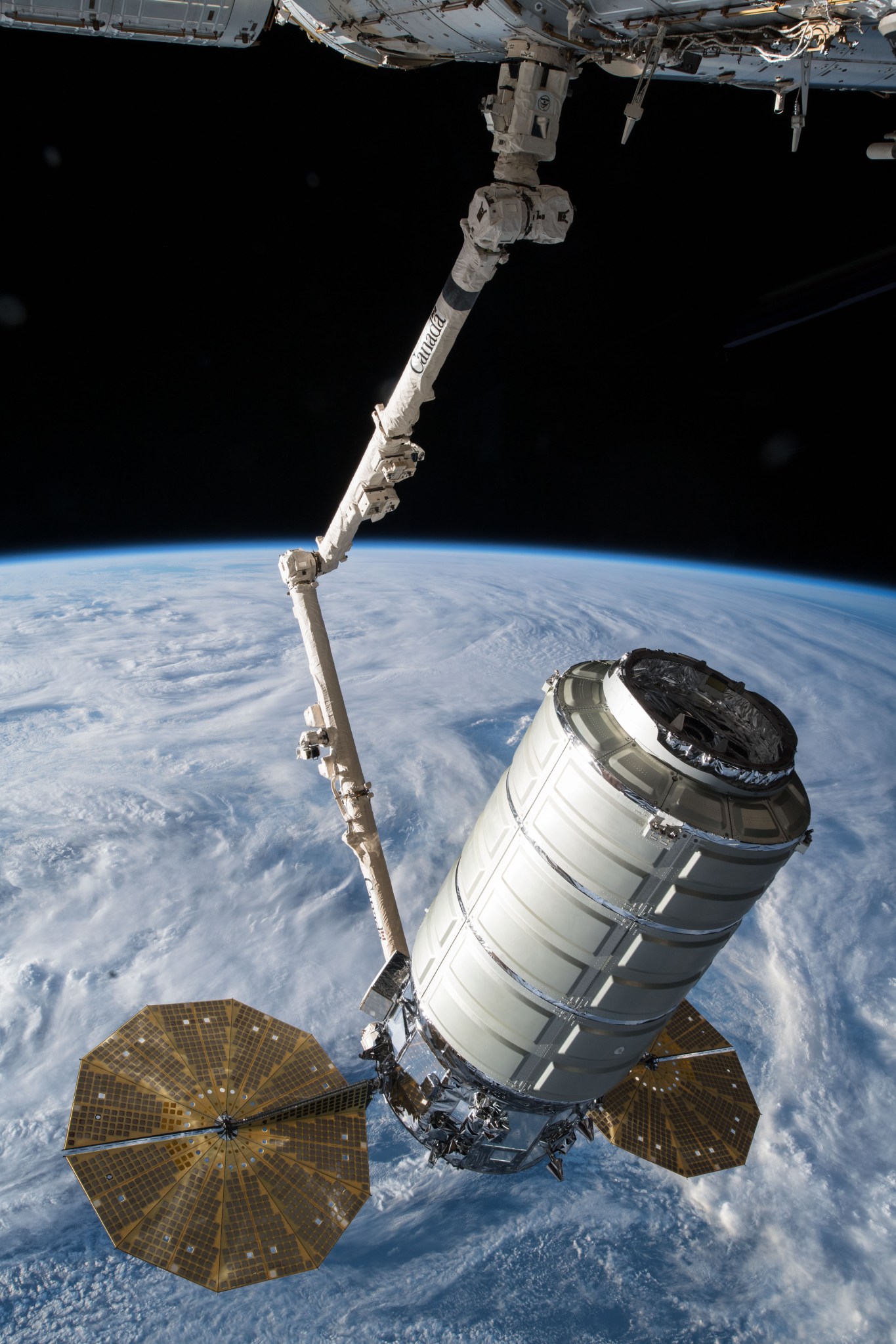
While many people enjoyed their first cup of coffee on the morning of July 15, NASA astronaut Serena Auñón-Chancellor and European Space Agency astronaut Alexander Gerst — flight engineers on the International Space Station — used the station’s Canadarm2 to release the Northrop Grumman Cygnus resupply vehicle. The spacecraft is dubbed the “S.S. J.R. Thompson” after the late James “J.R.” Thompson, who was director of NASA’s Marshall Space Flight Center from September 1986 to July 1989, and a distinguished leader in the aerospace industry. Cygnus launched May 21 on a Northrop Grumman Antares rocket from NASA’s Wallops Flight Facility and docked to the space station on May 24. It delivered over 7,000 pounds of supplies, experiments and hardware, including the “NASA Sample Cartridge Assembly-Gravitational Effects on Distortion in Sintering” experiment, managed by Marshall. The study looks at understanding and quantifying the role gravity plays on sintering — the process of making metal parts from a powder without melting. Having completed its primary resupply mission, Cygnus moved away from the space station and deployed a series of CubeSats for Northrop Grumman customer, NanoRacks of Webster, Texas. It will spend the next two weeks in orbit as Northrop Grumman flight control teams conduct engineering tests. Cygnus is scheduled to deorbit with thousands of pounds of trash July 30, burning up harmlessly over the Pacific Ocean. (NASA)
This Week in NASA History: ISERV Launches to ISS – July 20, 2012
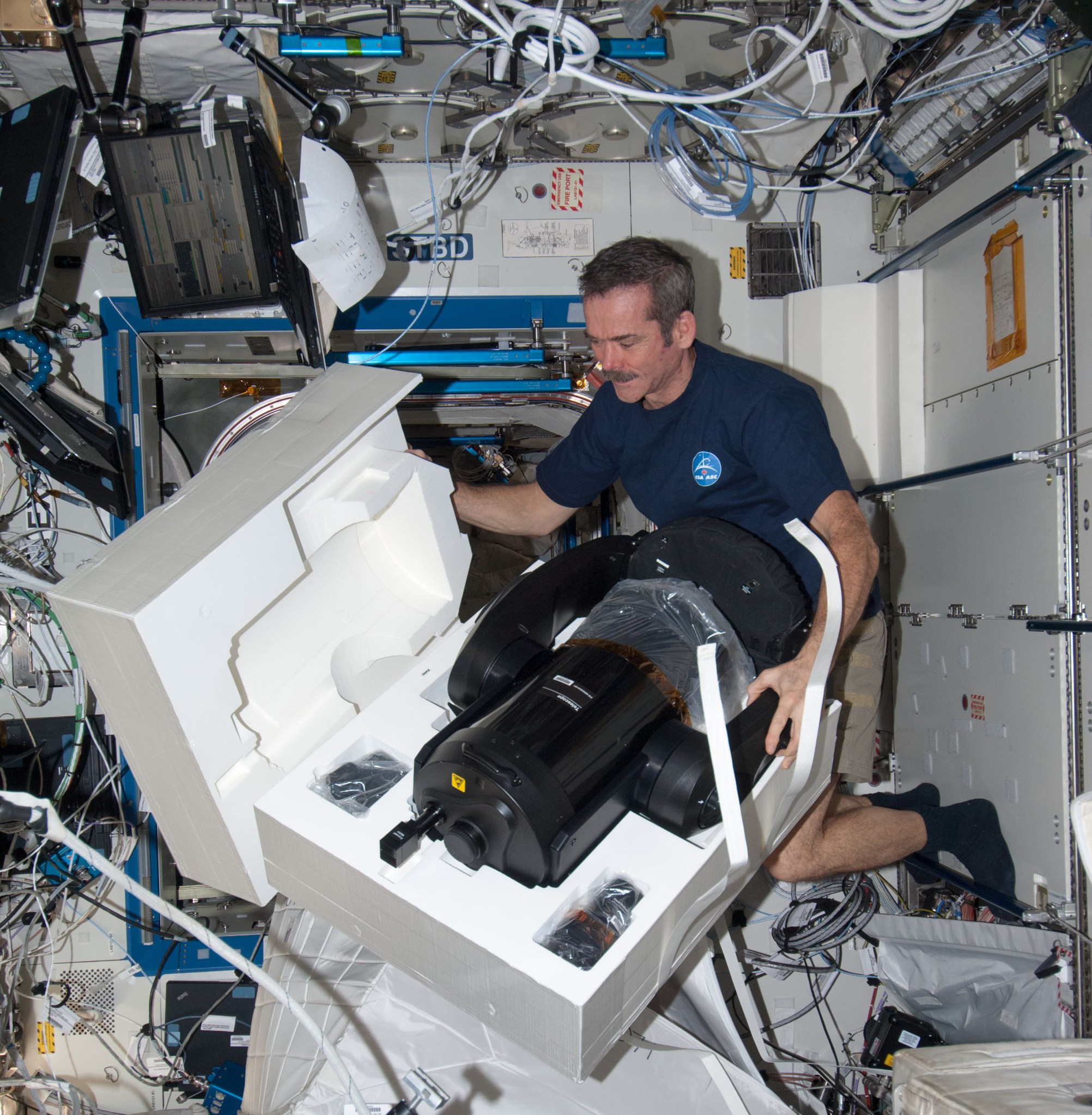
This week in 2012, the International Space Station SERVIR Environmental Research and Visualization System, or ISERV, launched to the space station from the Tanegashima Space Center in southern Japan. ISERV deploys in the Window Observational Research Facility — WORF — rack within the Destiny module of the station. It allows scientists in NASA’s SERVIR project to gain experience and expertise in rapid instrument tasking, automated image data acquisition and rapid data downlink. Here, Canadian Space Agency astronaut Chris Hadfield prepares to set up the ISERV in the Destiny module. The ISERV Pathfinder, a camera installed in the WORF, was designed and built at NASA’s Marshall Space Flight Center as part of the Earth Science Division’s SERVIR project. The NASA History Program is responsible for generating, disseminating, and preserving NASA’s remarkable history and providing a comprehensive understanding of the institutional, cultural, social, political, economic, technological, and scientific aspects of NASA’s activities in aeronautics and space. For more pictures like this one and to connect to NASA’s history, visit the Marshall History Program’s webpage. (NASA)
Discovery by Fermi Gamma-ray Space Telescope Highlighted on ‘This Week @NASA’
A new discovery by NASA’s Fermi Gamma-ray Space Telescope is featured in “This Week @NASA,” a weekly video program broadcast nationwide on NASA-TV and posted online.
For the first time ever, Fermi found the source of a high-energy neutrino from outside our galaxy. High-energy neutrinos are hard-to-catch particles believed to be created by the most powerful events in the cosmos, like galaxy mergers and material falling onto supermassive black holes. Scientists using data from Fermi’s Large Array Telescope traced this neutrino back to a blast of gamma-ray light from a distant supermassive black hole in the constellation Orion. The neutrino travelled 3.7 billion years at nearly light speed before being detected by an international team of scientists using the National Science Foundation’s IceCube Neutrino Observatory at the Amundsen-Scott South Pole Station in Antarctica.
NASA’s Marshall Space Flight Center manages Fermi’s Gamma Ray Burst Monitor.
View this and previous episodes at “This Week @NASA” on NASA’s YouTube page.
Obituaries
Ernest W. Harper Jr., 95, of Huntsville, died July 11. He retired from the Marshall Center in 1987 as a graphic designer. He is survived by his wife, Julia Harper.
John P. Crisler Sr., 79, of Fayetteville, Tennessee, died July 4. He retired from the Marshall Center in 1998 as an aerospace engineer. He is survived by his wife, Marilyn M. Crisler.
Bervil D. Davis, 87, of Madison, Alabama, died July 3. He retired from the Marshall Center in 1990 as an engineer.



























